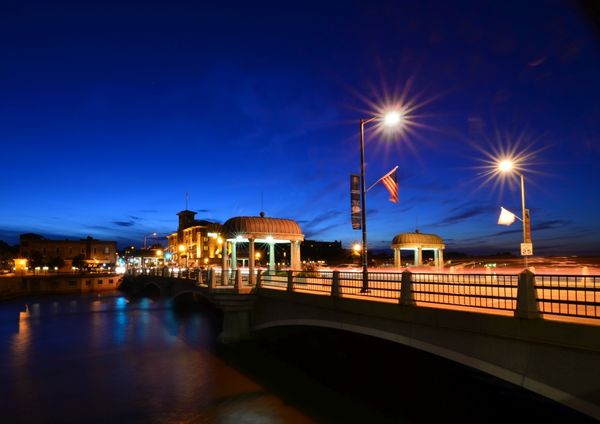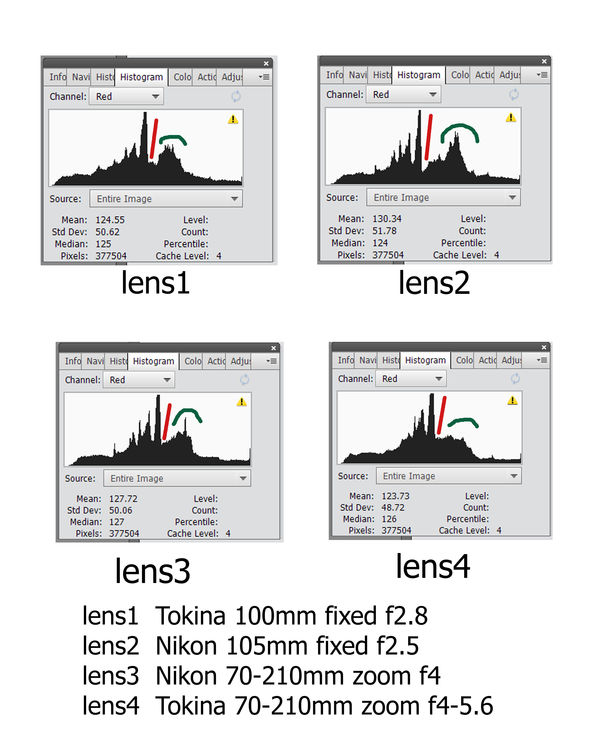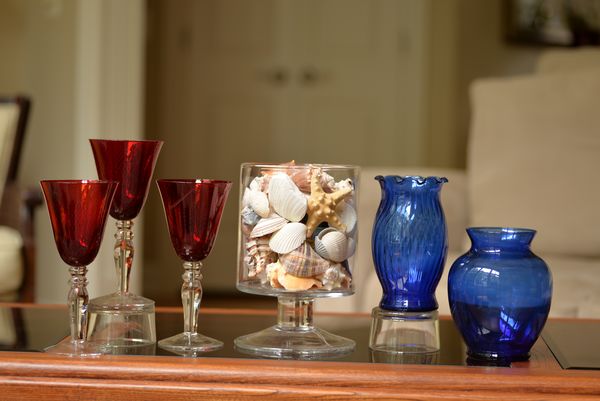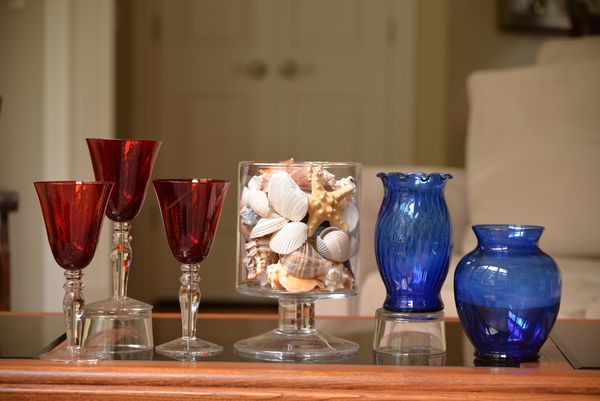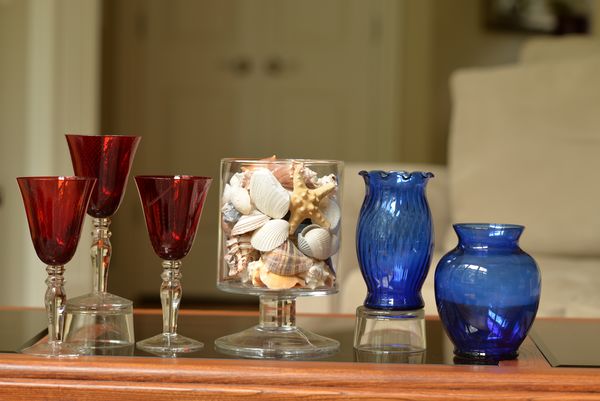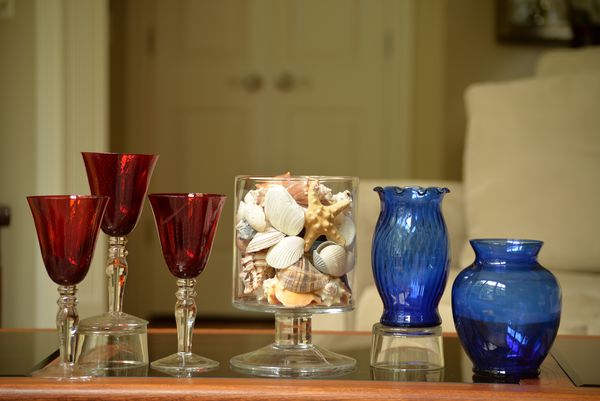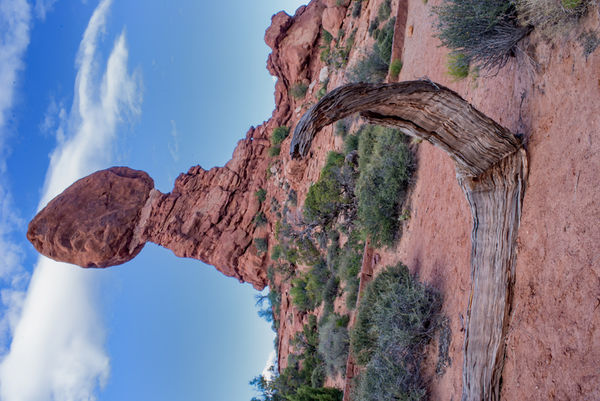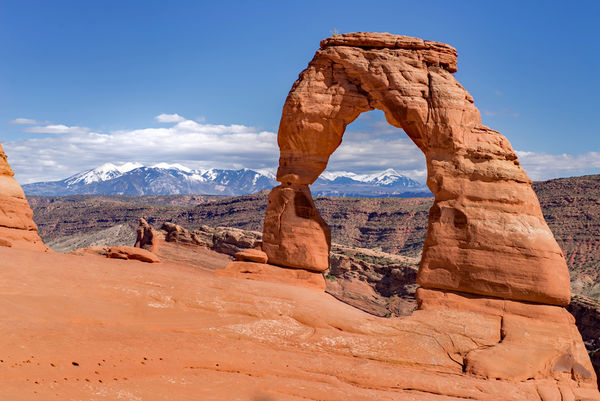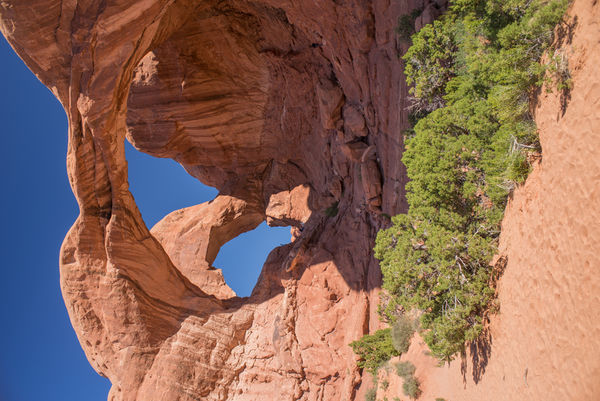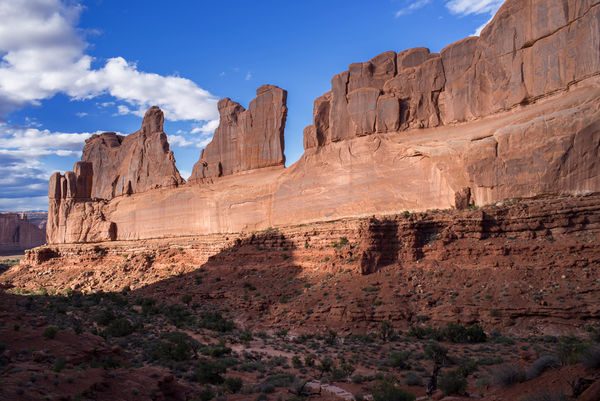Posts for: clickalot
Dec 18, 2017 11:12:01 #
If you want excellent image quality consider the older Nikon lenses that have low element count. For example, the Nikon 105mm f2.5 AI or AIS is an excellent lens. Yes, it requires manual focus. It can be purchased used for less than $200. Also, the Nikon 200mm f4 AIS is another example as is the Nikon 28mm f2.8 AIS. And of course the 50mm f1.8 auto focus. If you want very high image quality and want to keep cost down, this is one approach. I own all these lenses.
I am not saying that some newer lenses cannot match the image quality of these lenses, but there is a cost. And not all similar focal length newer lenses achieve the same or better image quality (my opinion of course).
I am not saying that some newer lenses cannot match the image quality of these lenses, but there is a cost. And not all similar focal length newer lenses achieve the same or better image quality (my opinion of course).
Sep 12, 2017 10:58:28 #
I was told to use a forked branch (Y shape) from a fruit tree and that "water witches" tend to run in families every other generation. It was supposed to be my generation. As a child, maybe 14, I tried it out. I started at an unused old well where a house had once stood (long gone) and found the branch did turn down for me. I kept following a trail pointed to by the down turning branch for about a mile and it led me to a spring that flowed into a creek. I had no prior knowledge of this spring or its location, although I did know there was a creek in that direction. However, as I stood at the old well, I had no conscious thought of going to the creek. Some say this indicated tracing an underground stream.
I am trained as an engineer, now over 60. Lots of science studies. Hard to explain the result I personally experienced in terms of science. I merely offer this as one account of one experiment which I know was not a fake/fraud.
I am trained as an engineer, now over 60. Lots of science studies. Hard to explain the result I personally experienced in terms of science. I merely offer this as one account of one experiment which I know was not a fake/fraud.
Sep 4, 2017 20:32:52 #
I use a Monoprice tablet on a Windows 10 PC with PSE. It does what I need it to do and at a fraction of the price of the Wacom's.
Sep 2, 2017 20:39:46 #
I have used several lenses with my D610. I like the Nikon 28mm f2.8 AIS manual focus for landscapes, the Nikon 60mm f2.8 for general purpose use and occasional macro, the Tokina 100mm f2.8 macro lens, and the Nikon 70-210mm f4 (f4 at all zoom lengths). The Nikon 200mm f4 prime manual focus produces great microcontrast and colors. All these lenses were bought used.
Aug 28, 2017 10:25:40 #
A great shot!
For my taste I would have post processed the image and removed the two points of light to the right. These attempt to draw my eye away from the main subject which is excellent.
For my taste I would have post processed the image and removed the two points of light to the right. These attempt to draw my eye away from the main subject which is excellent.
Jul 27, 2017 15:51:37 #
Just after sunset in St. Charles, IL.
Jul 26, 2017 16:21:09 #
I visited Arches, Canyonland, Mesa Verde, Black Canyon and the Great Sand Dunes this year in late May. I took many shots with my Nikon 28mm f2.8 AIS lens, the Nikon 60mm f2.8 and some with a Nikon 200mm f4. I can recommend these lenses.
Jul 25, 2017 23:22:45 #
Thanks to all who participated in my requested evaluation regarding an aspect of lens quality.
The below image shows the histograms of the red channel for each of the four lenses and identifies each of the respective lenses. The specified f-stop refers to the minimum f-stop number (maximum lens opening); "fixed" means a non-zoom lens, e.g. a prime lens. During the test, the aperture used for each shot was one stop above the minimum f-stop number. The same fixed white balance was used for each test shot.
I was interested in a relatively easy test that might be able to predict/discern the micro-contrast (that 3-D pop some lenses seem to have) based on a quantitative measurement. My hypothesis was that the granularity by which a lens differentiates light intensity across each of the RGB channels (RGB histograms) would correlate to the micro-contrast aspect of image quality.
My subjective ranking (best to last) of the 4 lenses based on a study of the RGB histograms is: lens2, lens3 just slightly over lens1, and lens4 last.
Using the red histograms, here is a sample of my reasoning. Note the corresponding regions indicated by the red line. Lens 2 has a distinct sharp valley which is much more distinct and sharp as compared with the other lenses. I interpret this as the ability of this lens to discern the lack of much information at the indicated intensity level which followed the spike showing the highest intensity level. Other lenses, which did not have such a distinct sharp valley, are interpreted to mean that the signal information on either side of this valley was "smeared" by imperfections in the glass elements to partially obscure the depth of the valley.
Also note the areas denoted by the green arc. Lens 2 has several distinct peaks with lens 1 also having distinct peaks but all peaks at about the same level; lens 3 has only one primary peak; lens 4 has substantially no peak at all. To me this demonstrates the ability of lens 2 to provide a higher level of granularity in sensing intensities across the red color channel.
It is my understanding that the respective lenses 1-4 have the following glass element counts: 9, 5, 13, 12. It is my opinion that as the number of glass elements in a lens increases, it becomes increasingly harder to provide good micro-contrast. Since each glass element has at least some level of imperfection, it is logical that when you combine a increasing number of such elements in series the probability decreases of obtaining good micro-contrast. It seems that many of the lenses in current production tend to have larger numbers of internal elements in an attempt to eliminate some undesirable lens parameters, e.g. CA, etc. However, in my opinion, this comes at a cost in terms of micro-contrast.
The below image shows the histograms of the red channel for each of the four lenses and identifies each of the respective lenses. The specified f-stop refers to the minimum f-stop number (maximum lens opening); "fixed" means a non-zoom lens, e.g. a prime lens. During the test, the aperture used for each shot was one stop above the minimum f-stop number. The same fixed white balance was used for each test shot.
I was interested in a relatively easy test that might be able to predict/discern the micro-contrast (that 3-D pop some lenses seem to have) based on a quantitative measurement. My hypothesis was that the granularity by which a lens differentiates light intensity across each of the RGB channels (RGB histograms) would correlate to the micro-contrast aspect of image quality.
My subjective ranking (best to last) of the 4 lenses based on a study of the RGB histograms is: lens2, lens3 just slightly over lens1, and lens4 last.
Using the red histograms, here is a sample of my reasoning. Note the corresponding regions indicated by the red line. Lens 2 has a distinct sharp valley which is much more distinct and sharp as compared with the other lenses. I interpret this as the ability of this lens to discern the lack of much information at the indicated intensity level which followed the spike showing the highest intensity level. Other lenses, which did not have such a distinct sharp valley, are interpreted to mean that the signal information on either side of this valley was "smeared" by imperfections in the glass elements to partially obscure the depth of the valley.
Also note the areas denoted by the green arc. Lens 2 has several distinct peaks with lens 1 also having distinct peaks but all peaks at about the same level; lens 3 has only one primary peak; lens 4 has substantially no peak at all. To me this demonstrates the ability of lens 2 to provide a higher level of granularity in sensing intensities across the red color channel.
It is my understanding that the respective lenses 1-4 have the following glass element counts: 9, 5, 13, 12. It is my opinion that as the number of glass elements in a lens increases, it becomes increasingly harder to provide good micro-contrast. Since each glass element has at least some level of imperfection, it is logical that when you combine a increasing number of such elements in series the probability decreases of obtaining good micro-contrast. It seems that many of the lenses in current production tend to have larger numbers of internal elements in an attempt to eliminate some undesirable lens parameters, e.g. CA, etc. However, in my opinion, this comes at a cost in terms of micro-contrast.
Jul 23, 2017 16:44:36 #
I made a test of 4 lenses with images shot at about 100mm with the same (or almost the same) test image. All were shot on a tripod with a Nikon D610 with the same fine jpg mode in camera processing to eliminate possible differences I might have introduced with a RAW conversion. These images are posted. I have formed an opinion and would like to see what others think about the perceived image quality produced by the lenses.
I recommend downloading the full size images and review with your favorite post processing program; I use Photoshop Elements. I am ignoring any slight differences in focus, apparent exposure and color cast (the last 2 easily dealt with in a RAW image in post and any focus issue could have been my error). I have made my judgement based primarily on the histograms, especially the red and blue histogram information which shows the response of each lens to colors at the ends of the color spectrum. The test shot has significant red and blue colors. After some time I will reveal the identity of the lenses and my judgement, which is of course just my view with which others may disagree. There are two fixed focal length lenses and two zoom lenses in this test.
I am interested to see if others would make a similar judgement.
Thanks in advance for those who participate for taking the time to do so.
I recommend downloading the full size images and review with your favorite post processing program; I use Photoshop Elements. I am ignoring any slight differences in focus, apparent exposure and color cast (the last 2 easily dealt with in a RAW image in post and any focus issue could have been my error). I have made my judgement based primarily on the histograms, especially the red and blue histogram information which shows the response of each lens to colors at the ends of the color spectrum. The test shot has significant red and blue colors. After some time I will reveal the identity of the lenses and my judgement, which is of course just my view with which others may disagree. There are two fixed focal length lenses and two zoom lenses in this test.
I am interested to see if others would make a similar judgement.
Thanks in advance for those who participate for taking the time to do so.
Jul 8, 2017 10:37:24 #
If not already mentioned, I use a Monoprice tablet about 10" x 7" on a windows 10 PC. The pen is great for precise control in doing selections and adjustments in PSE. Price is less than $70. Google it.
Jun 29, 2017 09:43:35 #
I elected to go Nikon DSLR some (many) years ago for one main reason. Old glass (lenses). There are a lot of high quality older Nikon lenses that can be purchased used at very reasonable prices, especially compared to new high quality lenses (from either Nikon or Canon). Nikon has been making cameras and lenses for many years and hence there are more older Nikon lenses than older Canon lenses. I say this although I like Canon cameras and use Canon printers and scanners.
If you do not intend to consider older used lenses, then either Nikon or Canon. How you craft the image (taking it and processing it) will be much more important than the particular camera used.
Whatever you choose, my recommendation would be to buy the best lens(es) you can afford.
If you do not intend to consider older used lenses, then either Nikon or Canon. How you craft the image (taking it and processing it) will be much more important than the particular camera used.
Whatever you choose, my recommendation would be to buy the best lens(es) you can afford.
Jun 8, 2017 16:53:28 #
Assuming you are only interested in the subject contained in the frame, you can capture two or more images with the glass at slightly different angles relative to the main light so the the glare occurs at different locations on the subject of the photograph. The exposure should be the same for images. Then, in PS or PSE you can add all the images in one common stack in separate layers, and then after aligning the subject in all layers, mask out the portions with glare. It can likely be done with 3 or maybe 2 shots of the same subject.
Jun 8, 2017 11:21:25 #
This was was my first time at Arches National Park. It has many great arches/places to appreciate and I only saw a few.
Hope you enjoy the photos. Most shots were taken with a Nikon 28mm f2.8 AIS manual focus lens mounted to a D610.
Hope you enjoy the photos. Most shots were taken with a Nikon 28mm f2.8 AIS manual focus lens mounted to a D610.
Apr 28, 2017 10:30:22 #
Just one more personal opinion, based on the image being submitted to a photo contest, the RACE would be my choice if cropped to better feature the action.
Apr 25, 2017 15:37:29 #
I tend to agree with this web site:
https://petapixel.com/2016/03/14/problem-modern-lenses/
I have several of the older, low element count, prime Nikon lenses and these produce some very nice images with good micro-contrast (what gives some images a more 3D look). Many of such older lens (for other lens makers also) are as good as and often better than current counterpart lenses. Not true for ultra wide and zoom lens, for which newer lenses with improved technology usually makes these superior.
The lens will produce an image on your sensor to the best of its abilities, regardless of what size or type sensor the image is focused on. A smaller than FF sensor, for a lens desired for FF cameras, will receive only a portion of the image rendered by the lens. This is what makes a 60mm FF lens render an image on an APS-C sensor as through it was about a 90mm lens, i.e. the edges of the rendered image is lost as not striking the APC-C sensor.
https://petapixel.com/2016/03/14/problem-modern-lenses/
I have several of the older, low element count, prime Nikon lenses and these produce some very nice images with good micro-contrast (what gives some images a more 3D look). Many of such older lens (for other lens makers also) are as good as and often better than current counterpart lenses. Not true for ultra wide and zoom lens, for which newer lenses with improved technology usually makes these superior.
The lens will produce an image on your sensor to the best of its abilities, regardless of what size or type sensor the image is focused on. A smaller than FF sensor, for a lens desired for FF cameras, will receive only a portion of the image rendered by the lens. This is what makes a 60mm FF lens render an image on an APS-C sensor as through it was about a 90mm lens, i.e. the edges of the rendered image is lost as not striking the APC-C sensor.
